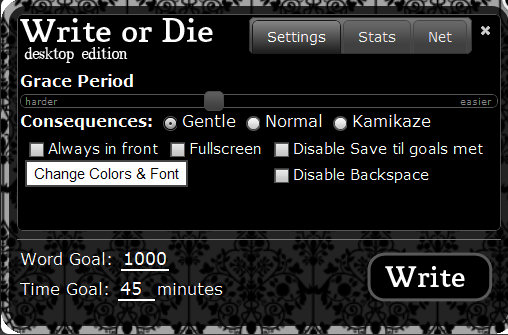From Kate's Writing Crate…
Favorite and familiar tools make writing easier. Once I pick up my blue, fine point Pilot V Ball pen and my sturdy spiral notebooks, I am in business. I start scribbling away. I stop and start as my thoughts dictate, but I never hesitate because my pen feels too heavy or scratchy.
If I am working on my computer, I only require white pages and black type in the Arial font. For three days recently, I had black pages with neon yellow type. Not sure how it happened, but I am grateful I finally figured out how to reverse it because this change gave me a headache. I didn't—couldn't—write under those conditions.
This doesn't mean you shouldn't try new tools. I write in different ink colors when I feel stuck, but I stick to the five colors of my favorite brand of pens mostly. For me, a V Ball pen just feels like an extension of my hand.
Trying new computer equipment can make a difference, too. Visit any store that sells computers and try them out or, as I did, try out a friend's computer. While visiting her home for a small get together, I noticed she had a very large screen for her desk top computer—about 50 percent bigger than the one I have. A user can see two pages of text, full size, side by side.
If asked, I wouldn't have thought I'd like that—too distracting. It's also a lot of light coming at the eyes. But the more I used it, the better I liked it. I could read documents like books. It made me feel more like a writer which surprised me. It was a new perspective that felt comfortable and familiar quite quickly.
I am now saving up to get a larger screen of my own. Who doesn't want to feel more like a writer? Especially when you are a writer!
What tools make you feel more like a writer?






